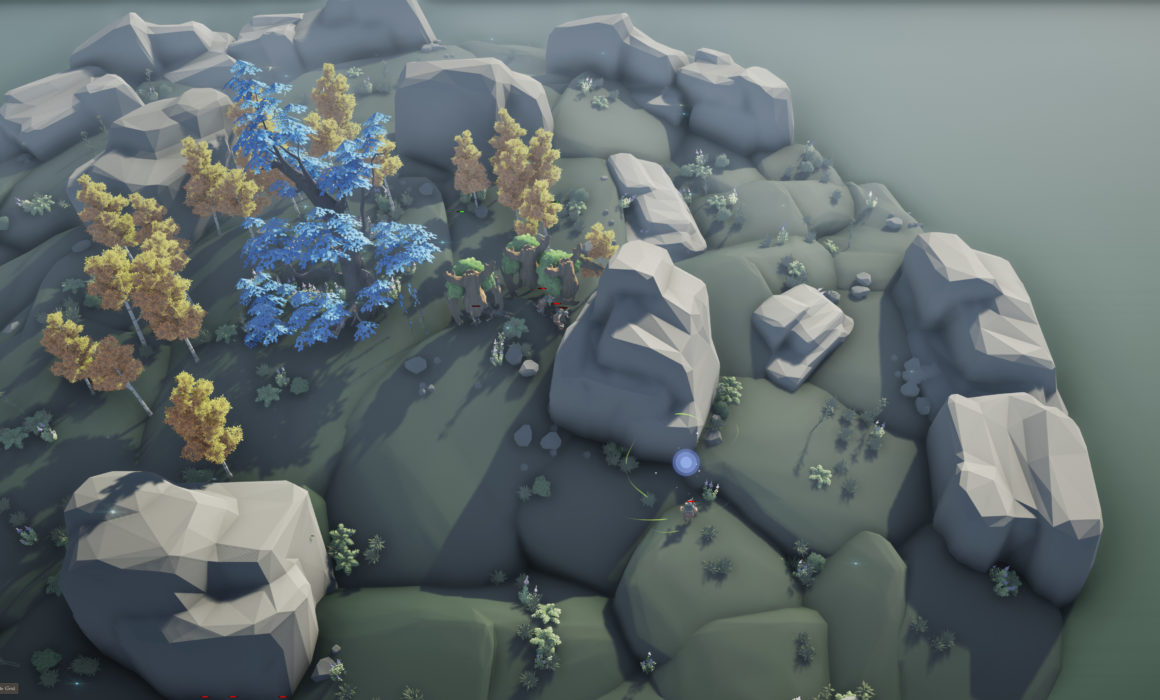Ludum Dare 44 – “Heart of the Grove” Postmortem
This past weekend I had the opportunity to participate in ludum dare 44 with my friend Joao Dalvi. For those who don’t know, ludum dare is an event where teams (or solo developers) create a video game prototype over a weekend. The timeframe is ambitious but it forces developers to both narrow down the scope of their design and push themselves.
Concepting
At the event’s start, the theme was announced: “Your Life Is Currency.” The first phase of a game jam is to brainstorm ideas and decide what game to make. Initially, we discussed mechanics such as summoning minions through blood sacrifice and using health to pay for actions. However, I have a policy of pushing back against early ideas because other teams in the event are likely to create a similar game (and based on the submissions, there are a lot of ‘pay with blood’ games).
Game jam themes can be taken literally or figuratively. From my experience, the figurative / metaphorical entries usually score higher. Gameplay that incorporates the theme is not enough – the entry must thematically stand out from the rest of the pack while also having solid polish in all areas – it can’t look like it was “rushed to finish by the deadline.” After discarding the initial ideas, we started thinking of ‘life’ in a broader sense:
- Life as a journey
- Life as a soul, like the soul of a forest
The second idea struck with us and we settled on a game where you play as the protector of a forest who ‘awakens’ trees to fight off loggers. To fit the theme, we decided the awakened trees (‘treants’) would leave the forest – they are no longer part of it after being uprooted. Hence, the life of the forest (trees) must also be spent to defend it.
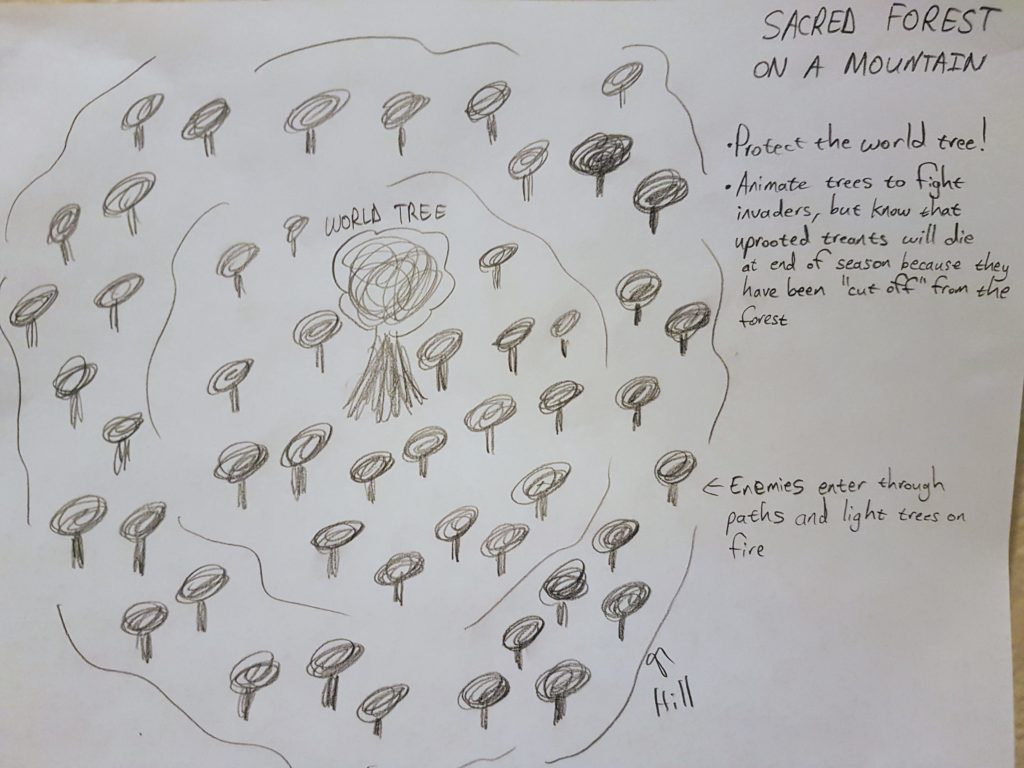
Production
The rest of the weekend was spent on development. I was in charge of the game look and feel, meaning the 3D models, 2D UI, audio, and visual effects. The aesthetic style I chose was “hybrid poly”, which combines low and high poly assets. I planned to use asset packs as the base for my high poly assets, so I began by creating the low poly blocks using Blender.
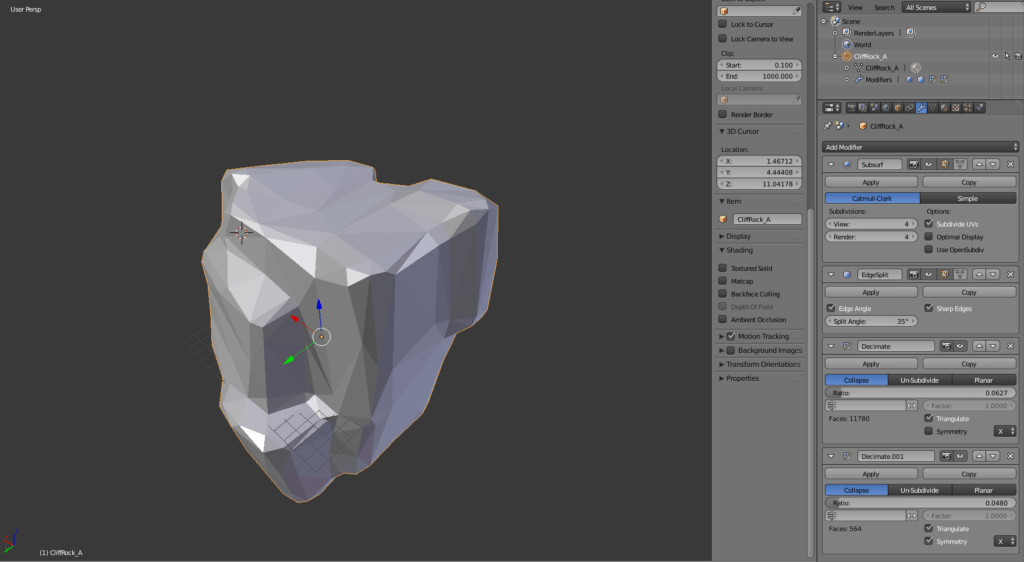
I modeled 2 cliff rocks, 2 ground platforms, and 2 small rocks. The base of our level is constructed from these objects, each being rotated and scaled in different ways to break uniformity.
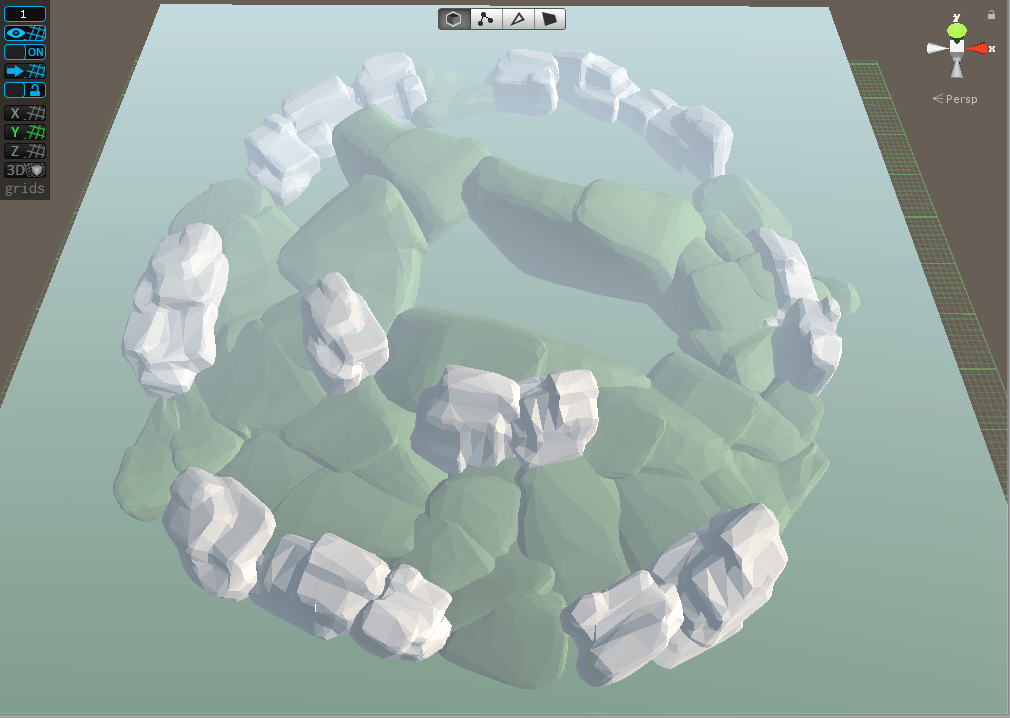
After finishing the level layout, I spent the remaining time modifying content from asset packs to fit our game, setting up post processing, and playing with scene settings to capture two primary moods: “mystical” and “airborne”. Check out the progression over time.
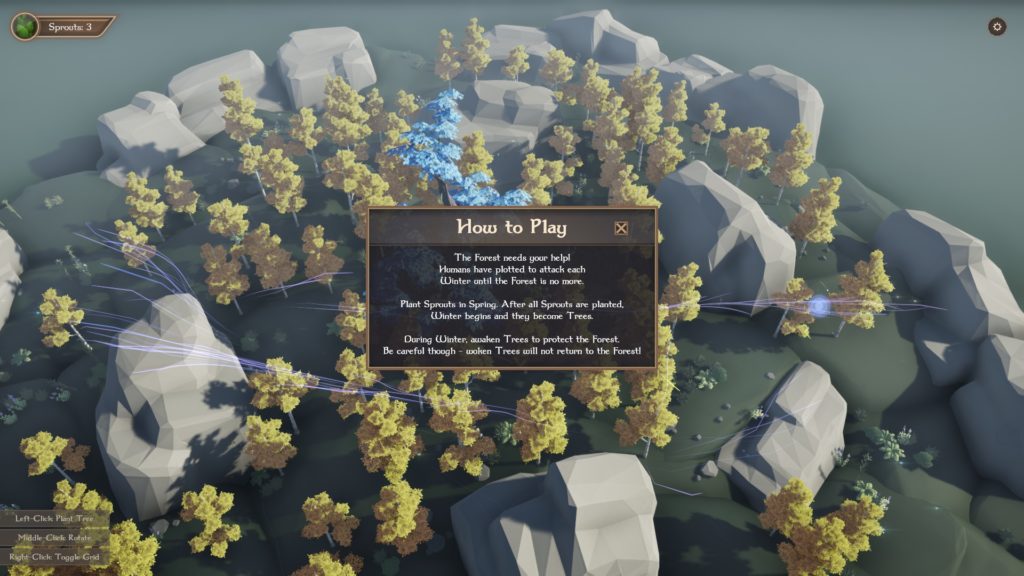
Retrospective
My time allocation looked approximately like this:
- Concepting: 1 hour
- Game Development: 41 hours
- Ice Skating Lesson: 2 hours (yes, I’m an aspiring ice skater!)
- Random Breaks: 6 hours
- Sleep: 16 hours (I didn’t sleep from Sunday to Monday)
- Testing / Tweaking / Building: 6 hours
Those with experience in hackathons and game jams know the actual time a person has to work is about half the allotted amount due to sleep, breaks, and fixing unexpected problems that arise from being imperfect developers. Numerous failed jams have taught me the most important part of these events is agreeing on a concept that can realistically be made in 1/3 of the given time. As my time allocation shows, we missed, and so the testing and tweaking of the game suffered. When this happens, the player experience (emotions, feelings of progress, excitement, etc.) relies largely on the luck of having initially put everything together in a way that creates a memorable experience. See some of the feedback below:



While our game was extremely polished, the gameplay did not have enough variety to entertain. Dullness, or the player feeling ‘bored’ is an experience that overshadows even the best graphics and plotline (see Ryse: Son of Rome). What I should have done is drawn the line on polish after the main level was production-ready, then dive into coding to add more dynamicism to the gameplay. We had only implemented a few simple mechanics and none of them (combined with the level design) allowed for interesting emergent experiences.
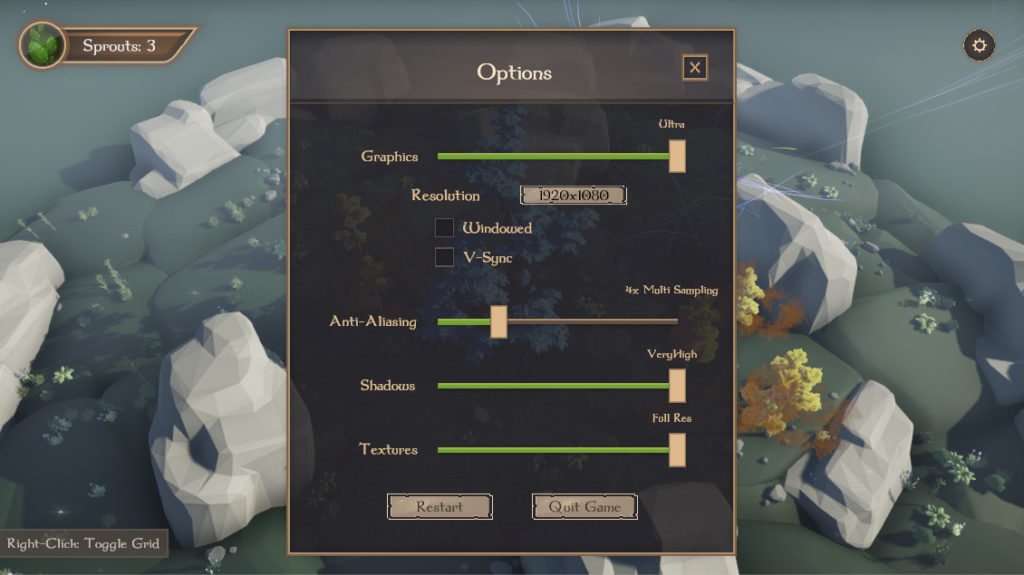
Overall though, we created a polished strategy game that even rose to the front of the ‘Popular Strategy Games’ section of itch.io for one week. I’m proud of what we accomplished in 72 hours and am already looking forward to the next weekend intensive.
Play our game here: https://ldjam.com/events/ludum-dare/44/heart-of-the-grove

